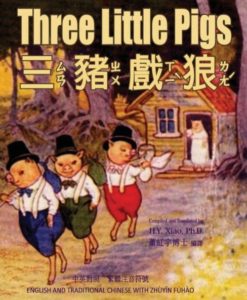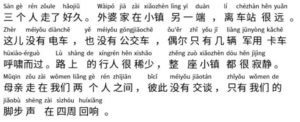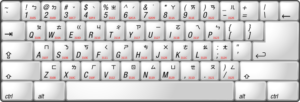If you’re not familiar, zhuyin ( 注音), known informally as bopomofo is a method of transcribing Chinese characters that local Taiwanese kids use in school. It is essentially the alphabet to Chinese learners in Taiwan. It is made up of 37 characters and 4 tone marks. The first four characters are pronounced as “bopomofo” which is what gives zhuyin its unofficial name (in the same way the English alphabet is sometimes known as the ABCs).
Each zhuyin character represents a distinct sound, that can be combined with other characters to form variations. Together, these 37 characters can be used to transcribe all possible sounds in Chinese.
Most expats learning Chinese use pinyin, which allows you to transcribe Chinese characters using the English alphabet that we’re already familiar with. Learning zhuyin bopomofo would first require you to learn 37 new characters and the sounds that each represents. Here’s what these characters look like:
ㄅㄆㄇㄈㄉㄊㄋㄌㄍㄎㄏㄐㄑㄒㄓㄔㄕㄖㄗㄘㄙ
ㄧㄨㄩㄚㄛㄜㄝㄞㄟㄠㄡㄢㄣㄤㄥㄦ
The first row above are actually consonants, while the bottom row are vowels. So you’ll usually see a combination of the first and second row to come up with sounds representing actual characters in Chinese.
So why learn zhuyin bopomofo if you already know (or are learning) pinyin? Here are three reasons.
-
Zhuyin pronunciation is more accurate.
As pinyin is based around the English alphabet, it is common for learners to use English pronunciation rules for some sounds in Chinese. The problem though is that some of the sounds in Chinese don’t exist in English, so if you try using English pronunciation rules when reading pinyin, you will end up with the wrong sound.
When learning zhuyin though, as it is a new character set, you are less likely to confuse it with English rules and are more likely to end up with more accurate Chinese pronunciation.
 2. Lot of reading material available with zhuyin transcriptions.
2. Lot of reading material available with zhuyin transcriptions.
If you want to learn to read in Chinese, there are a ton of resources made for kids in Taiwan that insert zhuyin alongside the Chinese characters. The zhuyin tends to be in a tinier font, so readers can focus on the Chinese characters first, and only use the zhuyin when required.
You are unlikely to find many equivalent materials with pinyin transcriptions.
3. You are less likely to cheat.
As an English speaker, if you did find materials with pinyin written next to it, you are more likely to focus on the pinyin, since it’s easier for your brain to comprehend the English alphabet than the foreign Chinese characters. This wouldn’t be an effective way of learning Chinese characters as ideally you would want to focus on those first.

As zhuyin is also a foreign character set, it is easier to focus on the Chinese character set first and use the zhuyin marks next to it to identify its pronunciation when required. This makes it easier to recognize and learn Chinese characters.
4. Learning zhuyin bopomofo opens the door to other resources

If you have looked at a local computer keyboard, you’re likely to notice the zhuyin marks inserted among the standard QWERTY layout. By typing in the relevant zhuyin characters, these are then converted to the equivalent Chinese characters.
When adding a Chinese keyboard option to your smartphone there are usually options for pinyin or zhuyin versions, so you can take your pick.
It is also the method used for looking up characters in local dictionaries, if you get to that level.
5. It offers another method to communicate with locals
Have you ever been in a situation where you know what to say in Chinese and say it, but are still not understood? Perhaps your pronunciation or tones are off. In such a situation, you could write out what you wanted to say in zhuyin bopomofo and probably be understood.
Or there may be a situation where the local is giving you information that you’re not clear about and they write it out to you in Chinese characters that you don’t recognize. Here is another situation where they could write it out in zhuyin bopomofo to make it easier for you to understand.
In either situation, pinyin is unlikely to work, even with locals who speak English, as they are unlikely to have learned pinyin and so would be unclear what the pinyin is saying.
Fun Facts about Zhuyin Bopomofo
- This system is only used in Taiwan and not in China. They use pinyin in China.
- Zhuyin is actually older than pinyin. It was first introduced in 1910. Pinyin was formed in 1950.
- Zhuyin can also be used to learn Taiwanese and other languages in Taiwan that have their own unique pronunciation systems.
.